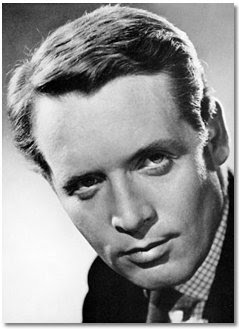It saddens me that we’re only a couple of weeks into 2009 and already I find myself writing about the death of one of my cinematic heroes.
Patrick McGoohan passed away after a short illness in his Los Angeles home yesterday. McGoohan, of course, will chiefly be remembered as the writer, co-creator, producer and star of the seminal, subversive and staggeringly brilliant 1960s TV show The Prisoner. As I’ve probably mentioned elsewhere, The Prisoner was, is and probably always will be one of my all-time favourite television shows and over the years I’ve watched the each of those 17 episodes – from Arrival through to Fall Out – more times than I care to admit.
In February last year Clare and I spent a lovely weekend in North Wales (which I wrote about here, here and here), and on the way back took a ridiculous detour so I could make my first, long-overdue pilgrimage to “the Village” itself, Portmeirion:
“In the popular imagination – well, in mine, at least – Portmeirion is the place where Patrick McGoohan’s famously numerophobic, former-government agent was sent to prison for a resignation he didn’t explain. As a huge fan of the cult 60s show The Prisoner, it was weird walking past all those odd buildings, so many of which have been hard-wired into my imagination since Channel 4 repeated the series in 1985. I was pleasantly surprised at how little The Village had changed in the 40-plus years since the show was originally made: Portmeirion’s Pantheon, for instance, was still recognisable as the green domed home to Number 2, while the stone boat on the shore still looked as mad and as incongruous as it did back then. Then again, it’s a boat. It’s made out of stone. How could it not look mad and incongruous?”
Like I said, I’m a fan.
Clare had never seen The Prisoner, and as we walked through Portmeirion’s Italianate grounds I told her all about the show. She couldn’t believe that somewhere as gorgeously ornate as this could serve as a fictional penitentiary and insisted on watching the series with me at the earliest opportunity. Now Clare’s a fan, too, and even little Lily seems to be getting in on the act. Instead of saying “Goodbye”, “So long”, “Auf Wiedersehen” or even “Adieu” she’s become rather partial to that weird and ubiquitous leave-taking phrase from the show, “Be seeing you.” She’s even mastered that weird salute – where the thumb and forefinger form a circle around the eye – that normally accompanies the phrase. It’s quite a thing to see.
But back to Patrick McGoohan. While he will forever be best known as The Prisoner’s Number 6, there was more to his illustrious stage, film and TV career than just that. In the 1950s, he so impressed another hero of mine, Orson Welles, with his stage presence that The Great Round One later admitted to feeling “intimidated“. In the 60s, besides The Prisoner, he also starred in one of the UK’s most successful TV exports, Danger Man (aka Secret Agent), became the highest paid actor in the UK and reportedly turned down the part of James Bond in Dr No on ethical grounds (or so the legend goes). We should also pause to consider the fact that he appeared not once, not twice, not even thrice but on four separate occasions as the murderer du jour in Columbo.
Some of the films he appeared in that deserve special mention include John Sturges‘ sublime Ice Station Zebra (1968), David Cronenberg’s Scanners (1981) and Don Siegal’s Escape From Alcatraz (1979). The last desrves special mention as he not only appeared alongside My Favourite Movie Icon of All Time, Mr Clinton Eastwood Jr, but he played Alcatraz Island’s sadistic prison warden. I always loved the irony of that.
Patrick McGoohan is survived by his wife of over 50 years Joan Drummond McGoohan and his his three daughters. My thoughts go out to his family and friends.









Leave A Comment